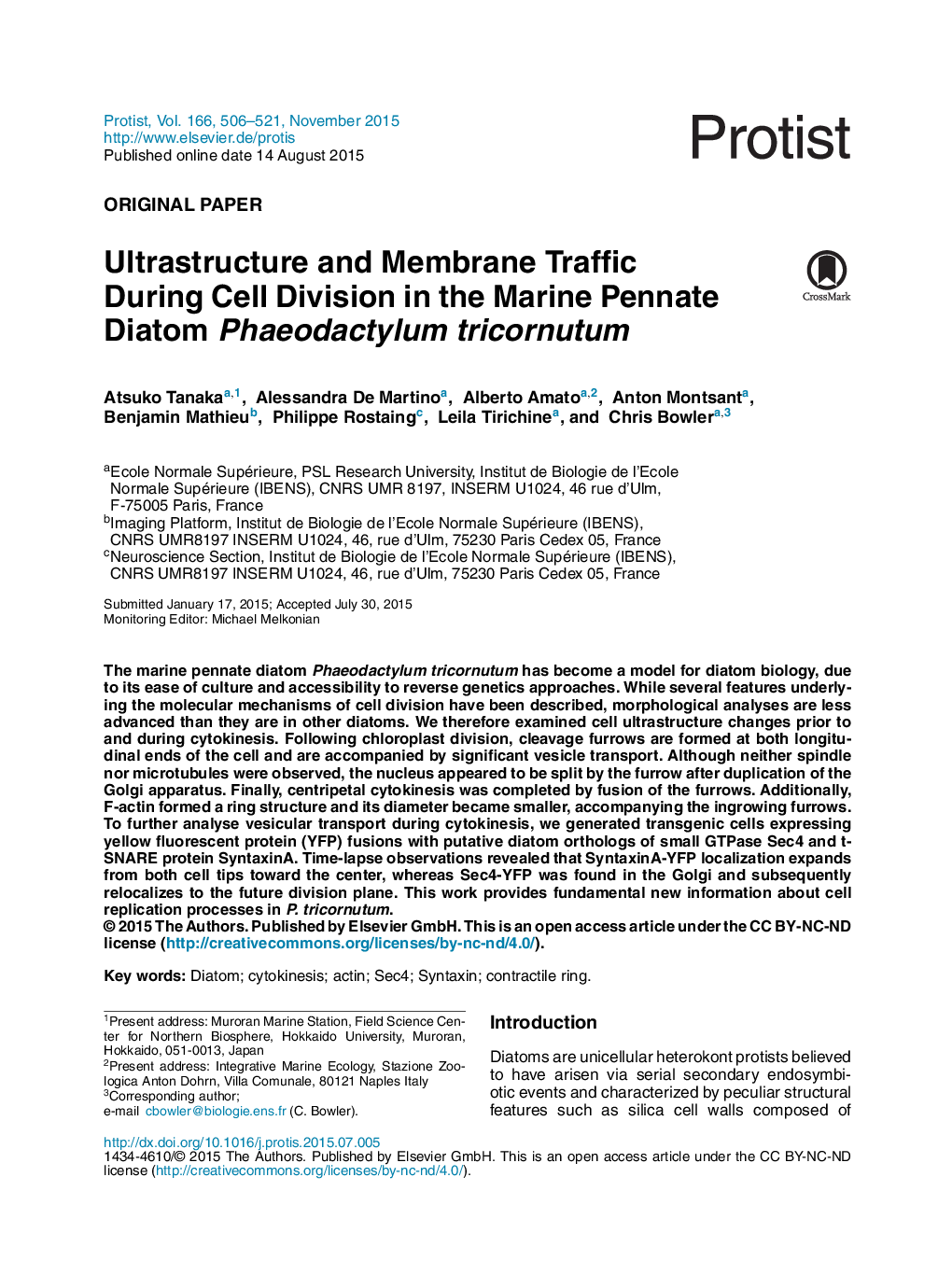| Article ID | Journal | Published Year | Pages | File Type |
|---|---|---|---|---|
| 10878983 | Protist | 2015 | 16 Pages |
Abstract
The marine pennate diatom Phaeodactylum tricornutum has become a model for diatom biology, due to its ease of culture and accessibility to reverse genetics approaches. While several features underlying the molecular mechanisms of cell division have been described, morphological analyses are less advanced than they are in other diatoms. We therefore examined cell ultrastructure changes prior to and during cytokinesis. Following chloroplast division, cleavage furrows are formed at both longitudinal ends of the cell and are accompanied by significant vesicle transport. Although neither spindle nor microtubules were observed, the nucleus appeared to be split by the furrow after duplication of the Golgi apparatus. Finally, centripetal cytokinesis was completed by fusion of the furrows. Additionally, F-actin formed a ring structure and its diameter became smaller, accompanying the ingrowing furrows. To further analyse vesicular transport during cytokinesis, we generated transgenic cells expressing yellow fluorescent protein (YFP) fusions with putative diatom orthologs of small GTPase Sec4 and t-SNARE protein SyntaxinA. Time-lapse observations revealed that SyntaxinA-YFP localization expands from both cell tips toward the center, whereas Sec4-YFP was found in the Golgi and subsequently relocalizes to the future division plane. This work provides fundamental new information about cell replication processes in P. tricornutum.
Keywords
Related Topics
Life Sciences
Agricultural and Biological Sciences
Agricultural and Biological Sciences (General)
Authors
Atsuko Tanaka, Alessandra De Martino, Alberto Amato, Anton Montsant, Benjamin Mathieu, Philippe Rostaing, Leila Tirichine, Chris Bowler,
